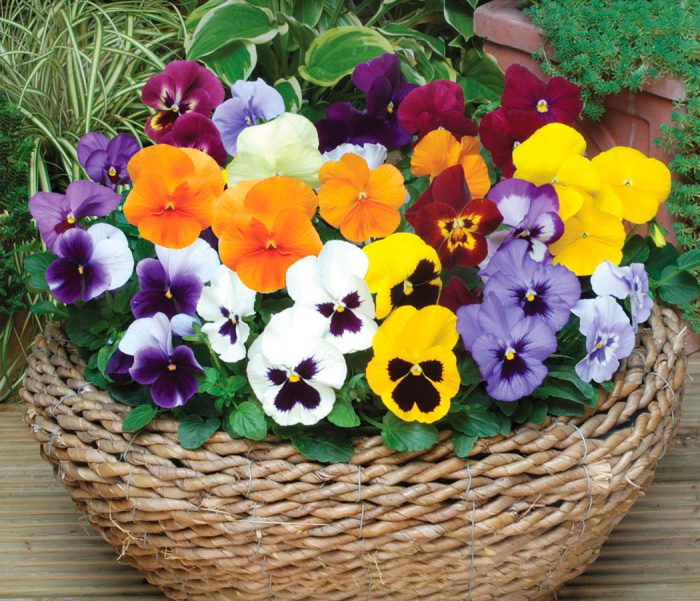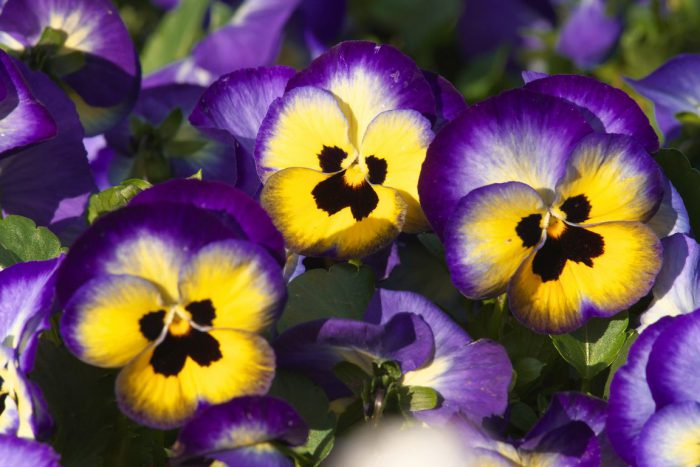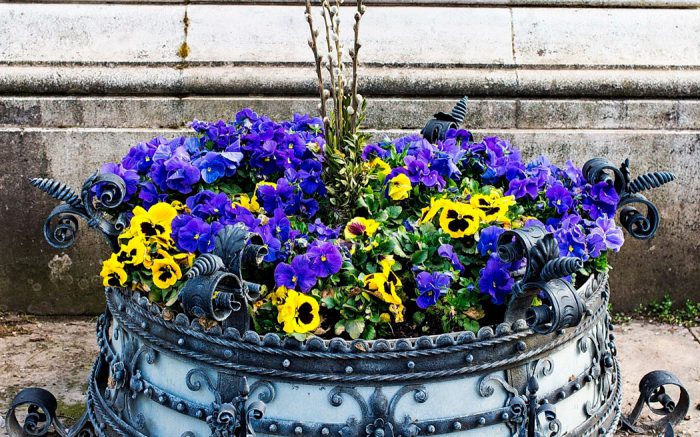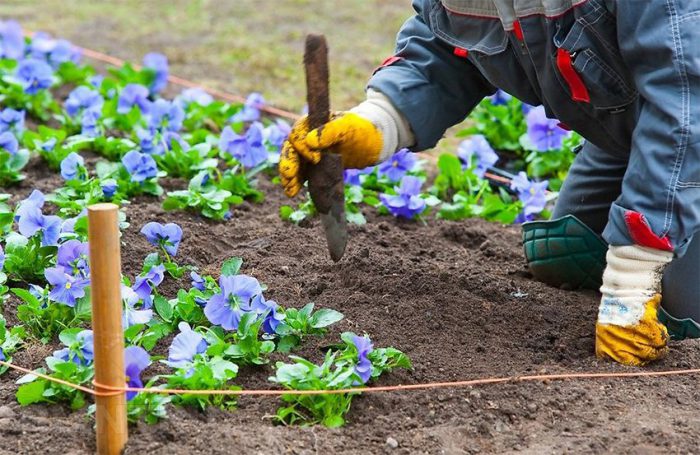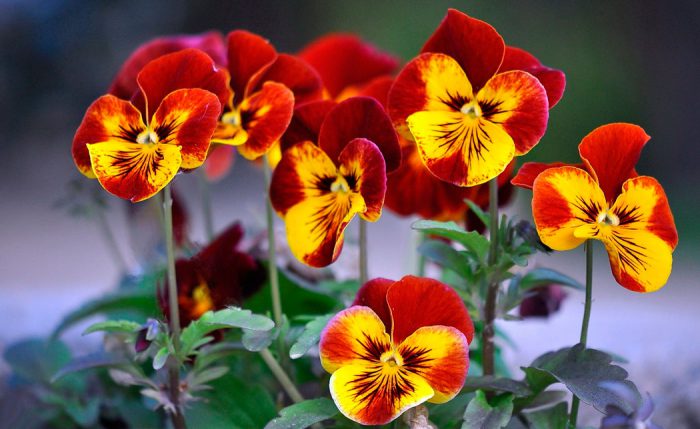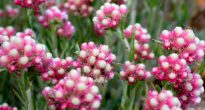In all corners of the earth, people love a flower called viola. In many countries it is called a violet. Due to its bright sky-blue color in Russia, it is called pansies. And in Ukraine, a different name is common - brothers, since outwardly the flowers are similar, but the color is different for everyone. Viola is an unpretentious garden crop, does not cause trouble for its owners, which is why it is so popular among flower growers.
There are about 500 wild species of viola. They are common throughout the planet. Violets prefer a temperate climate, but are also found in the subtropics.
Viola, as a garden culture, began to grow a long time ago. Fragrant violet was grown in the monastery gardens several centuries ago. The existence of the two-colored violet was known for a long time, but in culture it appeared in the 18th century, like the Altai violet. Thanks to these plants, in the 19th century, it was possible to obtain a hybrid Vittrock viola. Now it can be found in many gardens. With its bright flowering, it pleases from spring to summer. Its gorgeous colors can beautify any flower garden.
As a rule, "pansies" are called the hybrid form of the viola with four large petals raised up and one down. "Violet" is a wild species with two petals pointing up and three down.
Viola has small, dark green leaves. Their shape is oval, and the edges are jagged. The flowers are single, rather large, about 10 cm in diameter. The corolla has a variety of colors. In most cases, the top and bottom petals are different colors. There are violets with white, blue, yellow, blue, purple petals. They are monochromatic and spotted.
Most gardeners grow pansies as a biennial plant. But this flower can be perennial. Biennial viols have very expressive, large flowers of bright shades. They are the first to bloom. The flowering period lasts until the end of summer.
Self-seeding is the easiest way to reproduce violets. When the seeds are ripe, they are sown on the garden plot. At the same time, they begin to germinate at the end of summer or in the first months of autumn. In order for lovely flowers to bloom earlier, young plants should be planted in the fall. It is better to plant seedlings in early spring so that the violets have a powerful root system. Pansies adapt well to a new location. In this case, the flowers located on the bushes of violets should not be cut off.
Content
How to use violet in garden design
The violet blooms very early.The colorful pansy rugs look amazing. They will look very decorative if primroses or other spring bulbous flowers are planted next to them.
Viola can be used for landscaping terraces and balconies. Garden vases with pansies will not leave anyone indifferent. Thanks to the many varieties, perfect flower arrangements can be created. Many landscape designers recommend combining wild and cultivated species of pansies. Field viola can be grown in the garden. The tricolor violet is almost always present in Moorish lawns. The scented violet is a popular groundcover that is ideal for shady areas. Regardless of the type, viola captivates with its beauty, original shapes and colors.
Pansy Care
Seat selection
The violet will feel most comfortable in well-lit places. A slightly shaded place is also suitable for these charming colors. Fragrant violet prefers a light shade. It will thrive in moderately humid areas.
Young plants should be planted on flower beds, observing an interval of 10-20 cm. Dense planting is one of the risk factors for the development of root rot.
The soil
Violet is considered an unpretentious plant, but it is better to pick up loose, fertile soil for it. The land for cultivation should be well-drained so that water does not stagnate in it.
On poor and sandy soils, violets grow poorly, and their flowers are smaller. To avoid this problem, compost with humus must be added to the ground.
Watering
Pansies need moderate watering. Excessive moisture is contraindicated for them. Because of this, violets can rot. Although they tolerate abnormal heat well, watering should be increased in dry weather. In the heat, they need to be watered every other day, constantly loosening the soil. Due to the drying out of the soil, viols lose their decorative effect. Trying to retain moisture, the bushes bend to the ground. Flowers become small and inconspicuous. Blooming stops.
Top dressing
For better growth and development, it is better to enrich the soil in which pansies grow with mineral fertilizers. The plant is fed with nitrogen to keep the foliage thick and green. Phosphorus and potassium are essential for the vibrant color of flowers. It is important not to overdo it with nitrogen fertilizers. Excessive nitrogen content in the soil in a humid environment promotes the growth of fungal diseases.
Diseases and pests
When growing pansies, growers rarely encounter diseases and pests. The greatest danger to violets are insect larvae that live in the ground. This is a favorite treat of the beetle larvae. Also, the plant is prone to attack by aphids and owls. Getting rid of them is easy enough. To combat them, special tools are used that can be found in flower shops. If the rules for caring for the viola are not followed, diseases such as powdery mildew, spotting, root rot, black leg.
Reproduction
The violet is capable of propagation by seeds and cuttings. Most often, the seed method is used to obtain new offspring. To preserve an interesting color of flowers, pansies are propagated by cuttings.
There is no need to specially propagate tricolor or fragrant violets. Under the right conditions, these species take care of themselves. They grow well on loose, fertile soil. Do not be surprised when new bushes appear under berry bushes or along paths.
Depending on the type of plant, viola is sown at different times of the year. If you want to get an annual plant that blooms in early summer, seedlings are sown at the end of February. It is grown in greenhouses or boxes. As a rule, the first shoots appear in 2-3 weeks and they dive into the ground, and in May they are planted in a permanent place. Such plants will bloom in early summer.When growing pansies as a biennial plant, sowing seeds in open ground is carried out immediately after ripening, choosing suitable beds. In order for the seeds to develop well, they can be transplanted during flowering, when there are buds and flowers on the bushes. They tolerate transplanting very well.
To obtain the best varieties of pansies, use such a propagation method as green cuttings. The procedure can be carried out from May to July. As cuttings, take the green tops of the shoots, which have 2-3 nodes. They must be planted in a dark place, deeply deepened by 5 cm. It is equally important to spray the cuttings immediately after planting. It usually takes 2-3 weeks for the cuttings to take root. At the same time, they should be looked after and kept in moderately moist soil. For better rooting in the first days, the cuttings are covered with dampened paper. After that, they will not rot. Cuttings are regularly watered, sprayed, weeds growing nearby. When cuttings are rooted in May, the first flowers appear in summer. If rooted later, they will bloom in the second year.
Reproduction of hybrid species of violets allows you to rejuvenate the plant. In most cases, in the third year, the pansy grows strongly. This makes the bloom less attractive. You can get about 10 cuttings from one plant at a time. Over the summer, their number may increase to 45.

